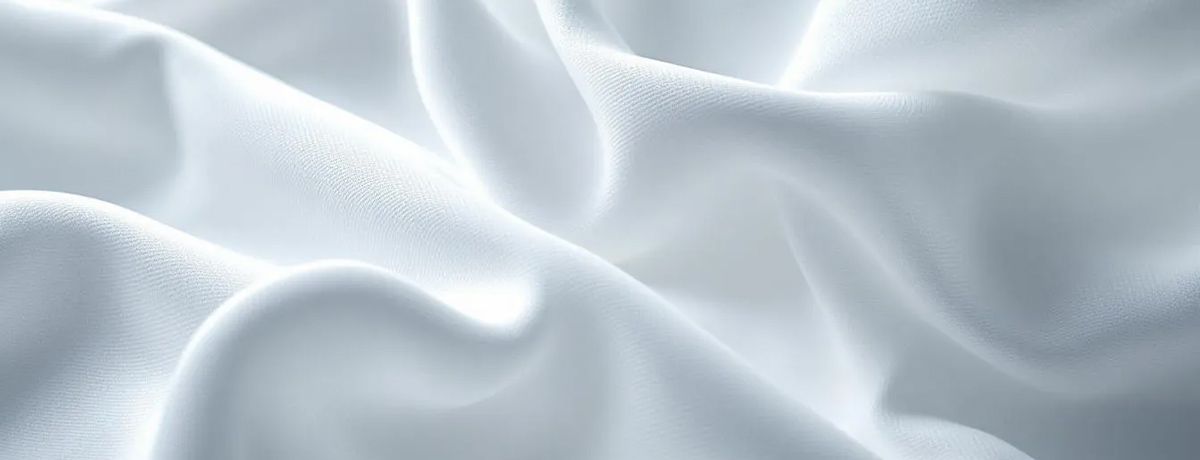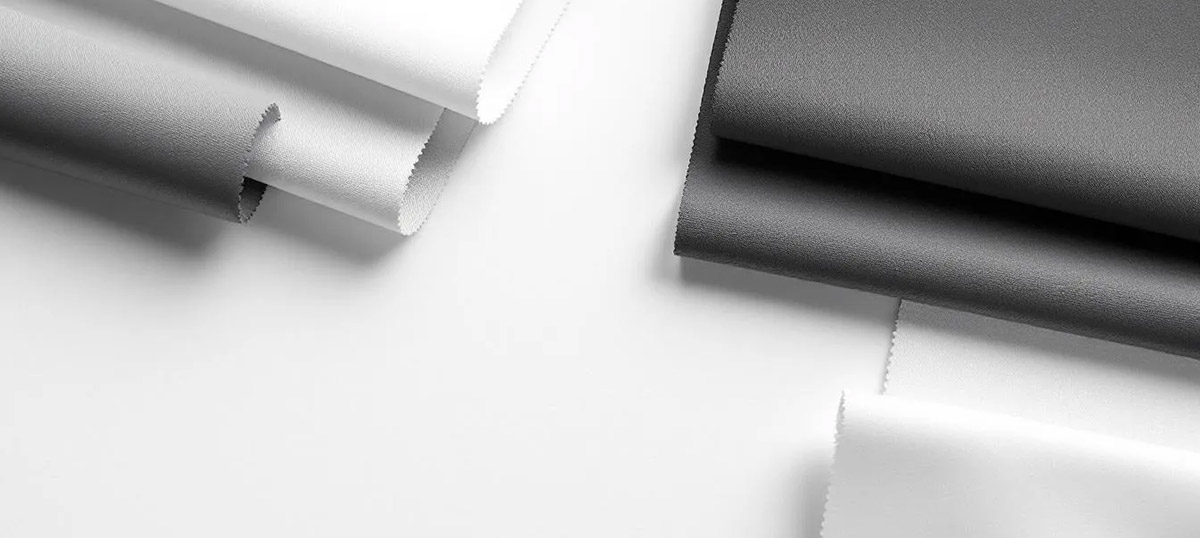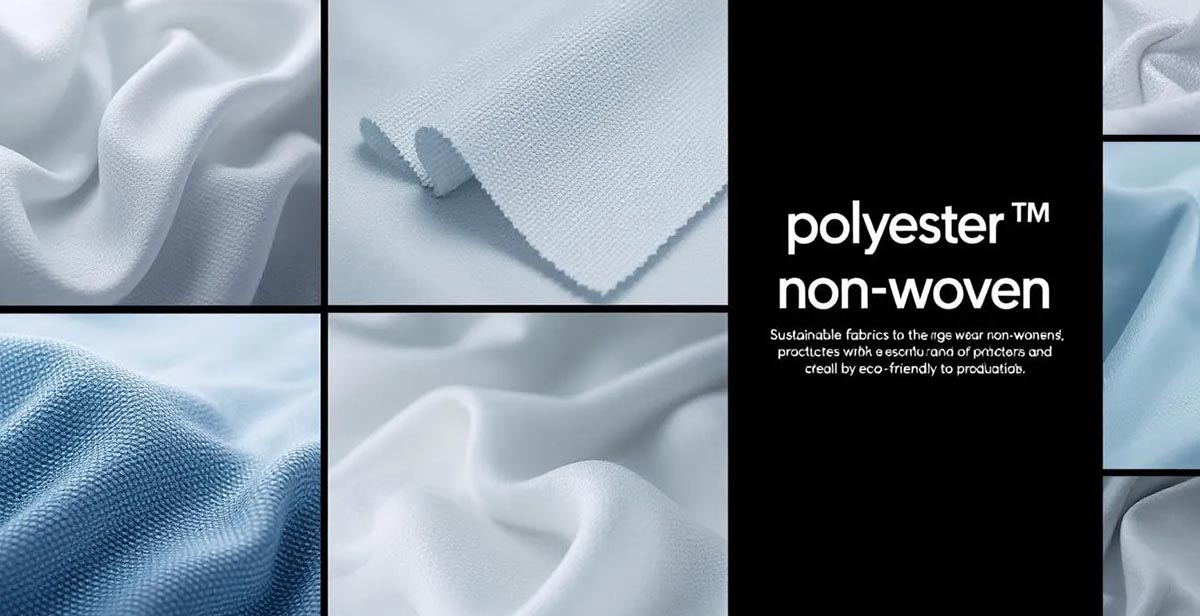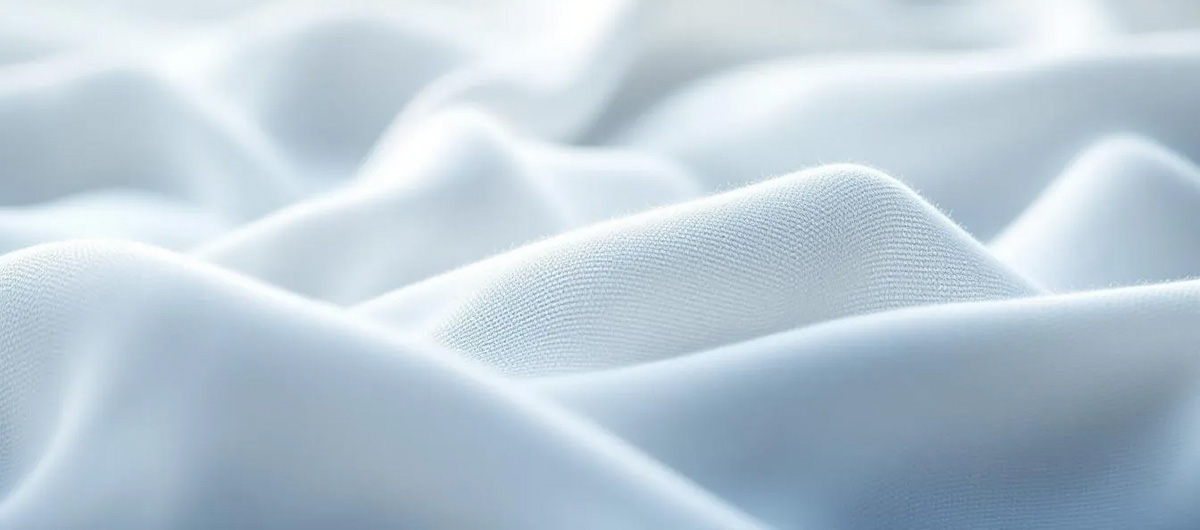Understanding Polyester Non Woven Fabric: Applications and Benefits

Polyester non woven fabric is a highly adaptable material made by bonding fibers together, rather than weaving. This unique method gives it versatile properties, making it widely used in medical, industrial, and textile applications. In this article, we explore its types, how it’s made, and its many uses.
Key Takeaways
-
Polyester non woven fabric is a versatile and customizable material produced through various techniques, ensuring color stability and ease of production.
-
Key types of polyester non woven fabrics include meltblown, known for filtration properties, and needle-punched, noted for durability, each serving distinct applications.
-
Despite environmental concerns regarding production and waste, the market for polyester non woven fabrics is expected to grow significantly, driven by demand in medical and textile applications.
What is Polyester Non Woven Fabric?
Polyester non woven fabric belongs to a category of materials defined as non-woven fabrics in the 1950s. Unlike woven fabrics, which are created by weaving threads together, non woven fabrics are made by bonding fibers together using various techniques. This results in a fabric that is more versatile and easier to produce in different forms and thicknesses.
One notable feature of polyester non woven fabric is its color stability, which ensures that the fabric maintains its vibrant appearance over time without fading. Additionally, its structure facilitates easy cutting and sewing, making it ideal for streamlined production and customization processes.
These attributes collectively contribute to the widespread use of polyester non woven fabrics essentially in a myriad of applications that offer similar versatility, including wide translucent options.
Types of Polyester Non Woven Fabrics

Polyester non woven fabrics come in various types, each with unique manufacturing techniques and properties. The most common types include meltblown and needle-punched fabrics.
Meltblown nonwoven fabrics are produced by extruding polymers, which are then formed into fibers that are cooled and bonded into a cloth. This type of fabric is known for its fine filtration properties, making it ideal for applications that require high efficiency in filtering particles.
On the other hand, needle-punched fabrics are created using needles to interlock and reinforce a fibrous web. This method produces a fabric that is robust and durable, suitable for applications that demand high tensile strength and resilience.
In summary, the primary types of polyester non woven fabrics include meltblown and needle-punched fabrics, each serving distinct purposes in various industries.
Production Techniques
The production of polyester non-woven fabrics involves various techniques, each tailored to achieve specific properties and applications. One common method is heat-sealing, where a bonding material within the fabric is melted and then consolidated to form a stable fabric.
Mechanical bonding is another technique, which uses physical forces to entangle fibers and create a fabric without the use of adhesives. This method makes it often used to produce fabrics that are durable and can withstand significant wear and tear.
Spunlace nonwoven fabrics are produced using high-pressure water jets to entangle fibers together, creating a fabric that is soft and absorbent. This technique is particularly useful for hygiene and medical products where comfort and moisture management are crucial.
Stitchbond fabrics involve a stitching process that combines fiber webs and nonwoven materials to enhance reinforcement and durability. Furthermore, polyester non-woven fabrics can undergo additional processing to incorporate specific properties such as UV resistance or antistatic features, making them even more versatile for various applications.
Key Characteristics
Polyester non woven fabrics are renowned for their high tensile strength and good abrasion resistance, which make them exceptionally durable under stress. These fabrics can withstand significant wear and tear, making them suitable for demanding applications.
The weight and thickness of polyester non woven fabrics can vary widely, with weights ranging from 6.4 to 81.1 oz/yd² and thicknesses from 0.03 inches to 0.09 inches. This variability allows for customization based on the specific needs of different applications, whether light and flexible or thick and robust.
Chemical bonding is a technique that relies on adhesives to bind fibers together, enhancing the fabric’s durability. Ultrasonic bonding, on the other hand, uses high-frequency sound waves to create precise and localized connections between fibers, resulting in a strong and stable fabric structure. Through-air bonding employs hot air to thermally fuse fibers, producing a soft and open fabric structure.
Polyester non woven textiles can also be engineered to exhibit specific performance characteristics such as breathability and moisture-wicking, making them ideal for applications that are required for comfort and moisture management. For example, these textiles are widely used in activewear and outdoor gear.
Applications in Various Industries

Polyester non woven fabrics are extensively used across various industries due to their versatile properties and adaptability. They find applications in the medical field, construction, and the textile industry, among others.
In the medical and hygiene products sector, polyester non woven fabrics are valued for their high filtration efficiency and fluid resistance, making them ideal for products like surgical masks, gowns, and sanitary items that require protection.
In the textile industry, these fabrics play a crucial role in enhancing the structure and support of garments through their use in interlinings and linings. The following subsections will delve deeper into their specific applications in these sectors.
Medical and Hygiene Products
Polyester non woven fabric is widely used in the production of medical and hygiene products due to its water resistance and flame resistance, which are crucial for maintaining safety and hygiene standards in medical environments. The fabric is non-toxic and hypoallergenic, ensuring that it is safe for use in products that come into direct contact with the skin. Its air permeability and ability to endure extreme temperatures are essential features for effective moisture management in medical applications.
Polyester non woven fabrics are commonly used in disposable surgical gowns that provide a barrier against pathogens and fluids, significantly reducing the risk of hospital-acquired infections. Additionally, these fabrics are integral to the manufacturing of surgical masks, which feature multiple layers for effective filtration.
In the realm of hygiene products, polyester non woven fabrics are used in diapers for their softness and absorbency, ensuring comfort and hygiene for the user.
Textile Industry
In the textile industry, polyester non-woven fabrics are utilized for a variety of purposes, including linings and interlinings in clothing. These applications provide structure and support to garments, enhancing their overall durability and fit.
Moreover, the softness of polyester fabric non-woven fabric ensures comfort in applications such as clothing and bedding, making them a preferred choice for products that come into direct contact with the skin.
Advantages Over Traditional Fabrics
One of the primary advantages of polyester non woven fabrics over traditional fabrics is their cost-effectiveness. The prices of these fabrics are generally lower, making them an economical choice for various applications.
Polyester non woven fabrics can be treated to exhibit specific properties such as UV resistance, digital printing capabilities, and antistatic properties, further enhancing their versatility. Additionally, their color stability ensures that they maintain their vibrancy over time, unlike some traditional fabrics that may fade.
The structure of polyester non woven fabric allows for easy cutting and sewing, simplifying the production process and enabling rapid customization to meet specific needs.
Environmental Impact and Sustainability

The production of polyester is energy-intensive, emitting significant levels of CO2, which contributes to its environmental impact. Furthermore, poor treatment of wastewater from polyester manufacturing can lead to local pollution and harm nearby water sources.
Polyester’s non-biodegradability means it can persist in landfills for over 200 years, posing long-term ecological challenges. Additionally, microfibers from polyester textiles, estimated at 0.5 million tonnes annually, enter waterways and can adversely affect marine ecosystems.
Despite these challenges, there are efforts to improve the sustainability of polyester non-woven fabrics. Technological advancements in manufacturing processes are expected to lead to fabrics with enhanced strength and biodegradability, reducing their environmental footprint.
Market Trends and Future Potential
The global market for nonwoven polyester fabrics is projected to grow significantly, from approximately USD 62.2 billion in 2025 to around USD 112.4 billion by 2035, indicating a compound annual growth rate of 6.11%. The medical applications segment is expected to hold the largest market share, driven by the demand for sterilizable, disposable medical textiles. Increasing demand for lightweight and moisture-resistant materials is also driving market growth, particularly in the automotive industry.
North America leads the market, owing to a strong healthcare sector and strict regulations on hygienic materials. Meanwhile, the Asia-Pacific region is anticipated to experience the fastest growth due to rapid urbanization and industrialization.
Advancements in production techniques, such as thermal bonding, have gained popularity due to their ability to enhance production speed and reduce energy costs. Additionally, the production of recycled polyester product is expected to result in a significantly lower carbon footprint and contribute to market growth.
Summary
Polyester non woven fabrics have proven to be indispensable across various industries, offering unique advantages over traditional fabrics. Their versatility, durability, and cost-effectiveness make them a preferred choice for applications ranging from medical products to the textile industry.
As we look to the future, the market for polyester non woven fabrics is set to grow, driven by technological advancements and increasing demand for sustainable materials. Embracing these fabrics can lead to innovative solutions that meet the evolving needs of various sectors while addressing environmental concerns.
Frequently Asked Questions
What are the main types of polyester non woven fabrics?
The main types of polyester non-woven fabrics are meltblown and needle-punched, distinguished by their specific manufacturing processes and characteristics. Understanding these differences can enhance their application in various industries.
How are polyester non woven fabrics produced?
Polyester non-woven fabrics are produced through techniques such as heat-sealing, mechanical bonding, spunlace, and stitch bonding, allowing for the customization of properties like UV resistance. These methods ensure the versatility and durability of the fabric in various applications.
What are the key characteristics of polyester non woven fabrics?
Polyester nonwoven fabrics are characterized by high tensile strength, excellent abrasion resistance, and a range of weights and thicknesses. They also offer engineered performance features such as breathability and moisture-wicking capabilities.
What are some common applications of polyester non woven fabrics?
Polyester nonwoven fabrics are commonly employed in medical applications such as surgical masks and gowns, as well as in hygiene products like diapers, and in the textile industry for interlinings and linings in clothing.
What is the environmental impact of polyester non woven fabrics?
Polyester non-woven fabrics have a significant environmental impact due to their energy-intensive production processes and non-biodegradability, leading to long-term ecological challenges. While there are advancements aimed at improving sustainability, their usage still presents substantial concerns.
Contact MH
MH offer polyester non woven fabrics. Please contact us for more details or inquiries. We're here to help!


